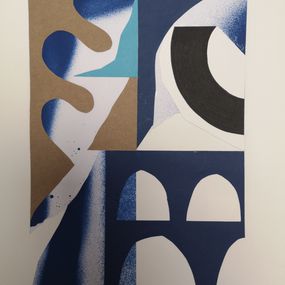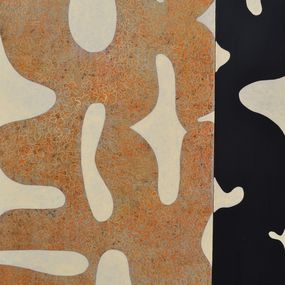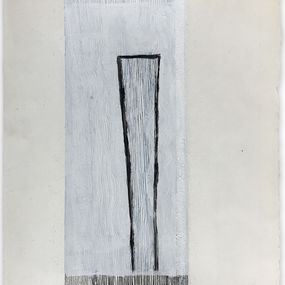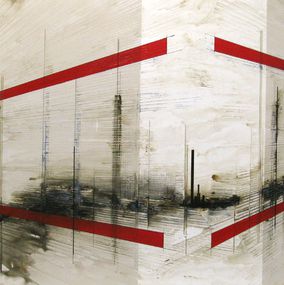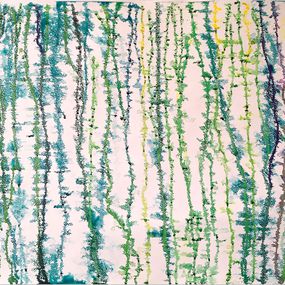
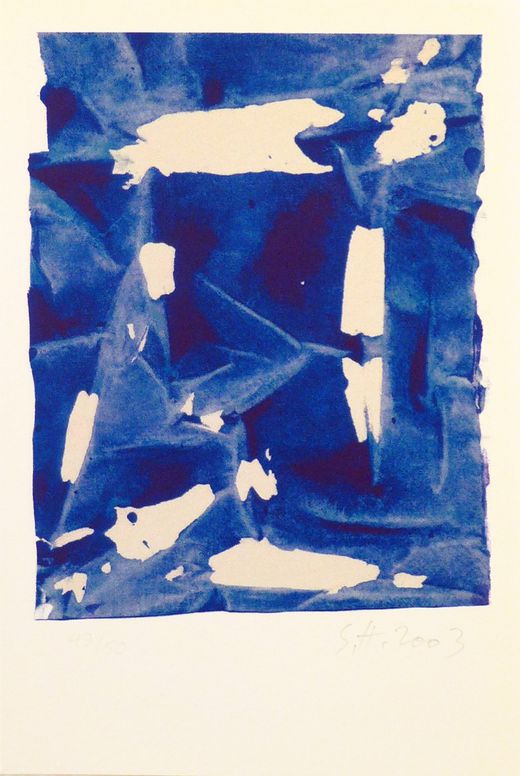
Sculpting one’s painting with these foldings is sculpting an image of oneself that breathes with its own energy.
Biography
Simon Hantaï, born in 1922 in Bia, Hungary, was a pioneering figure in European abstract art. After studying at the School of Fine Arts in Budapest, he moved to Paris in 1949, where he joined the Surrealist movement and encountered influential figures like André Breton. During this period, Hantaï experimented with a variety of techniques, including collage, rubbing, and folding. His early work features strange, intertwined, and undulating shapes that are representative of his exploration of Surrealist aesthetics. Hantaï's early paintings combined organic forms with an abstract approach, reflecting his fascination with the subconscious and the surreal.
The Fondation Louis Vuitton celebrated the centenary of Simon Hantaï with a major retrospective from May 18 to August 29, 2022, featuring over 130 works from 1957 to 2000 and an in situ tribute by Daniel Buren. Several institutions continue to showcase his work. The Musée des Beaux-Arts de Lyon is hosting Simon Hantaï dans les collections XXe/XXIe siècles from July 12, 2024, to March 30, 2025. The Centre Pompidou-Metz features a dedicated room for Hantaï in the ongoing REPETITION exhibition (February 4, 2023 – January 25, 2025), exploring themes of repetition and accumulation. Additionally, MoMA New York is displaying his works in Touching the Void, running until December 2024, examining the shift in 1960s art away from personal expression.
In 1955, Hantaï distanced himself from Breton and the Surrealists, turning instead to the influence of American Abstract Expressionism, particularly Jackson Pollock. This shift in his artistic practice led him towards a more gestural and lyrical form of abstraction, rooted in dynamic, expressive brushwork. His 1956 exhibition Sex-Prime, Hommage à Jean-Pierre Brisset at Galerie Kléber in Paris introduced his innovative technique of "erasing" parts of the canvas to reveal vibrant backgrounds, creating the illusion of light emanating from within the painting. This approach to color and space marked a major turning point in Hantaï's work, shifting towards a more complex and layered aesthetic.
By the early 1960s, Hantaï developed his revolutionary "folding" technique, which became the hallmark of his later work. This process, exemplified by the Mariales series exhibited at Galerie Kléber in 1962, involved folding the canvas in intricate ways before applying paint only to the convex surfaces of the folds. This blind painting technique, in which the artist worked with the folds of the canvas rather than its surface, meant that the full composition was only revealed when the canvas was unfolded. This innovative process allowed Hantaï to engage with the canvas as a whole, treating it as an organic, multi-dimensional entity rather than focusing on individual sections. His folding technique would go on to inspire a generation of young artists throughout the 1970s.
Simon Hantaï represented France at the prestigious Venice Biennale in 1982, further cementing his place in the international art scene. Afterward, he withdrew from the public eye to focus solely on his artistic research, continuing to explore the boundaries of abstraction and gesture until his death. Hantaï's legacy as a leading figure in the development of modern abstraction remains influential today, with his works held in prominent collections worldwide. His approach to color, form, and texture continues to inspire contemporary artists, and his innovative folding technique remains a key contribution to the history of 20th-century art.
Nationality
Categories
Artistic movements
Themes













